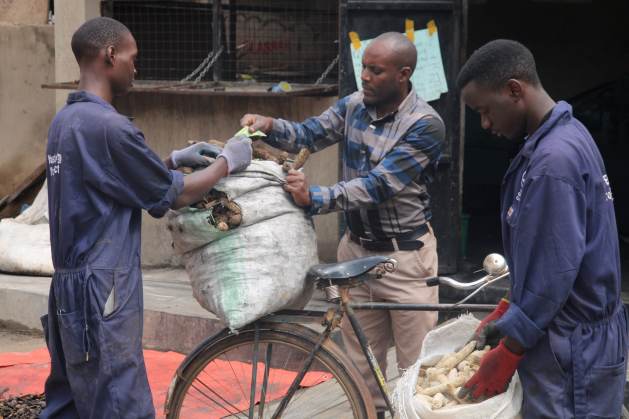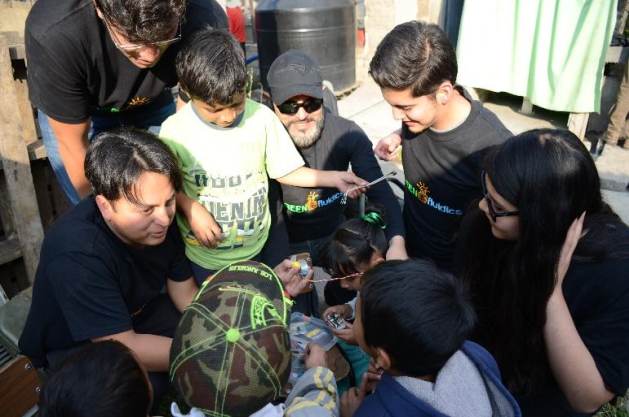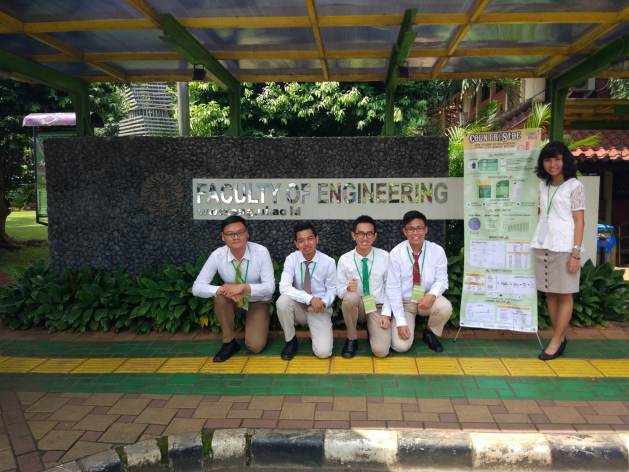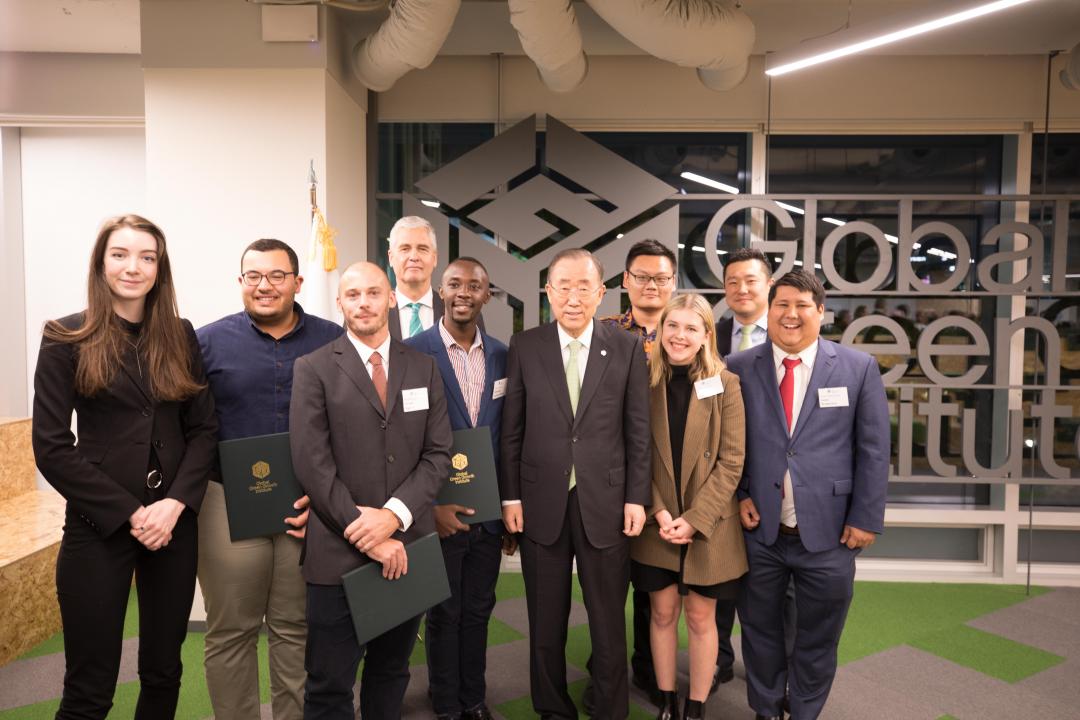Green growth: necessary, affordable, and teeming with jobs
Tell us about GGGI.
We do two things, from a bird’s eye view. First, we help countries with global “green growth plans.” In practice, that work has been replaced by supporting countries to achieve their Nationally Determined Contributions (NDCs) for the Paris Agreement or helping countries implement the UN Sustainable Development Goals (SDGs). Second, then, is to translate those plans into what we call “bankable projects.” A big part of our work is helping governments get access to green and climate finance or helping them mobilise resources to implement those plans.
Special for the organisation is the fact that we have the majority of our staff embedded in governments. In about thirty countries, we have staff in ministries of finance, infrastructure, or environment to work directly with governments. Being embedded in governments and working both on policy and finance are the critical parts of GGGI´s formula for success.
How can governments help shape an enabling environment for inclusive and environmentally sustainable business models that are also competitive?
Governments can either get in the way by, for example, having old policies which are obstacles to inclusive and environmentally sustainable businesses or they can more proactively provide an enabling environment by having the right policies in general, particularly around renewable energy or green buildings. I was in a private sector workshop in Senegal, with a number of businesses, from small to large. We asked, “What stops you from investing in off-grid energy?” The majority said that it´s actually government policy obstacles. Either the wrong policies are in place, where governments subsidise fossil fuels, which make renewable energy less competitive, or the right policies are not in place, like allowing renewable energy to have access to the grid (through either power purchase agreements or net metering).
Another example is in Rwanda where we helped the government develop a green building minimum compliance standard that they will soon roll out, which gives guidance to all developers on what is required for green buildings. That includes more energy efficient equipment, building materials, and even rainwater harvesting. Each of these government actions, in our view, provides business opportunities for inclusive and environmentally sustainable businesses.
What does the concept of "green growth" encompass?
For some, including initially the Korean government, green growth primarily referred to low-carbon development, but indeed, GGGI very deliberately thinks of green growth as a three-legged stool. It is growth, but it is also environmentally sustainable and socially inclusive.
For instance, we have a green city programme. Of course, cities need to become more environmentally sustainable, but a critical strategic outcome of green cities is also providing sustainable public services, particularly to the low-income parts of town. For example, to make sure that sanitation does reach—in a sustainable manner—all parts of town and not only the ten or twenty percent of the higher income parts and to make sure that public transportation is both electrified and affordable for low-income groups. We see a good opportunity to combine green, in terms of the environment, with inclusive in terms of poverty reduction, thereby addressing the more “traditional” development dimensions of sustainable livelihoods.
I’d like to add something on green jobs. Often, governments are worried that they will lose brown jobs, jobs in Katowice, in Silesia or other places with coal mines, for example. Governments need to realise that there are many more jobs to be gained in the green growth economy and that they can have a key role in making current employment more climate-resilient. In large parts of the world, they are less worried about mitigating emissions, but about making their economies more resilient to climate change. Governments actively encouraging more climate-resilient and decent jobs, whether in agriculture and food value chains or related to renewable energy, is essential. Governments need definitions of what green jobs are, they need to have a baseline for the current levels of green jobs, and they need to come up with policies that stimulate green and inclusive jobs—decent work—particularly for low-income people. This is the key part of the inclusive side of green growth.
What do you think are the major obstacles in moving towards a more sustainable and inclusive business world—and how do you think they can be overcome?
I think possibly the most important obstacle to introducing green growth is that many governments and other stakeholders still think that while it might be nice, unfortunately it is too expensive. Our response is: Green growth is both necessary and affordable. The World Bank and the Asian Development Bank have stopped funding coal-fired power plants because they are no longer the cheapest form of energy; clean energy is now the cheapest.
I was in Rwanda two years ago and met the Minister of Infrastructure. My team wanted me to speak about green building materials for residences, but the Minister was most excited about the largest infrastructure project in the country—their new airport. So I asked him, “Will it be a green airport?” And he laughed and said, “It´s an airport. What do you want?” I explained that all our new infrastructure needs to be sustainable. The Minister was intrigued and asked us for advice. We provided him with a wonderful, female engineer from Singapore who demonstrated that by including rainwater harvesting and low-efficient lighting, and by planning for solar panels on parts of the airport, it could be a zero-emission airport. It could use 50 percent less water than was planned. The most amazing thing is that the whole airport design became cheaper, rather than more expensive. They saved money. Bugesera Airport is likely to be certified as the first green airport in Africa, I think.
Selling governments on the fact that it is in their best economic interest to “go green” and that there are business opportunities in doing so—that is still news to many.
What is your view on the future?
Of course, we all should be extremely worried about climate change. At the same time, we see so many opportunities; obviously everything around renewable energy, but also the transition that is about to come with affordable electric mobility—whether it is cars, buses, tuk-tuks, or motorbikes. We see a lot of very good business opportunities, which make us optimistic. You can read the New Climate Economy’s 2018 report. Don’t just think of climate as expensive, but there is also a US$ 26 trillion economic opportunity for businesses to invest in. Their estimate is that there are 65 million new green jobs to be created. The bottom line is that despite all those big challenges we see, I am optimistic about the future.
Do you have a message for entrepreneurs that are trying to build inclusive businesses?

I think there is a lot of hope for young, green entrepreneurs. Last year, together with the Youth Climate Lab and Student Energy, two youth organisations, we had the first global green business plan competition. We had 350 applications from teams of young people who want to start green and/or inclusive businesses. We then had mentoring for about ten of those teams and in the end, also small start-up capital prizes for four of them. Those kinds of efforts, not just from us but from others as well, stimulate and support young people who want to start green businesses. We will do the competition again next year and we will also start green business incubators in a number of countries. We see a lot of interest in this from governments, universities and from a very large number of young people. I find that very encouraging—a shout out to young people!


Additional Resources:
Green Growth Knowledge Platform
Established by the Global Green Growth Institute (GGGI), the Organisation for Economic Co-operation and Development (OECD), the United Nations Environment Programme (UN Environment), and the World Bank, this platform aims to identify and address knowledge gaps in green growth theory and practice. It is based on a partnership of a large number of knowledge partners.
